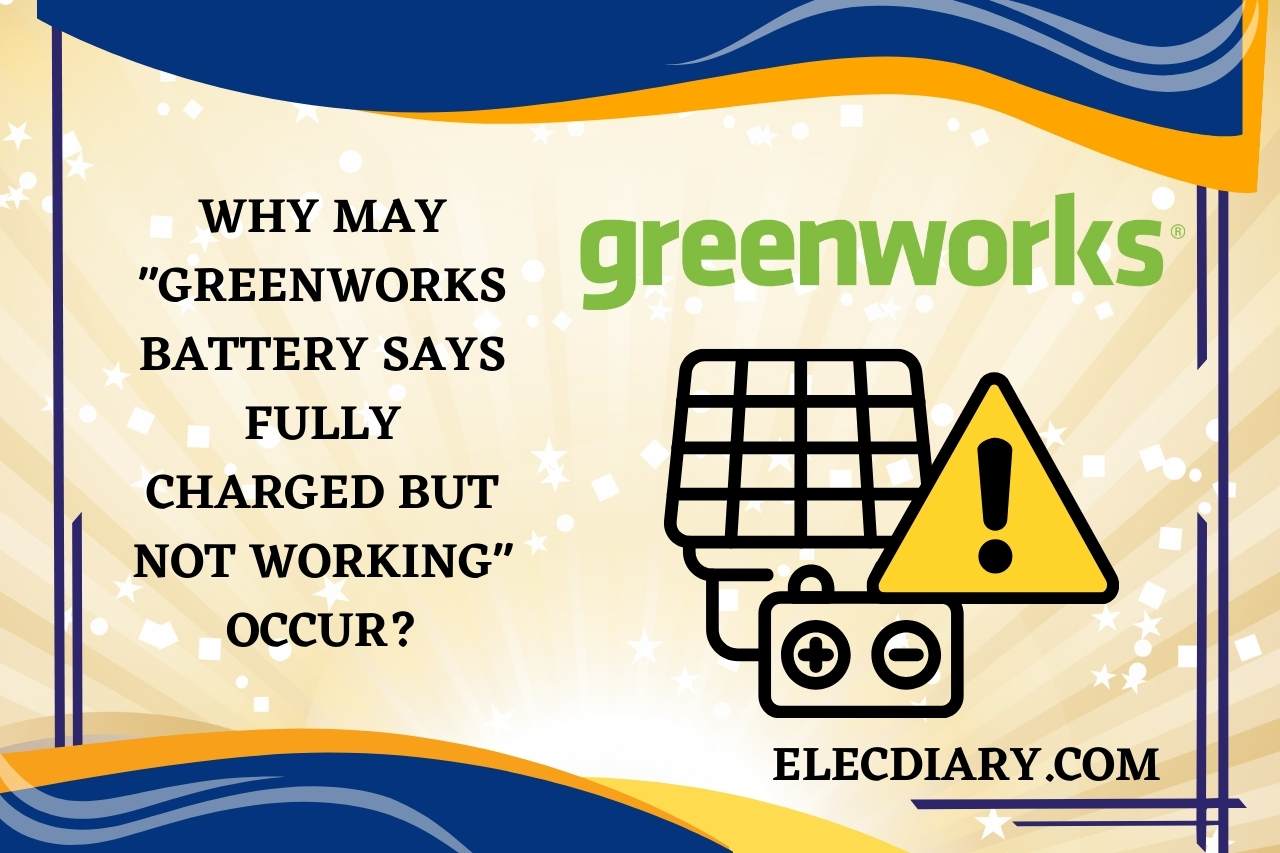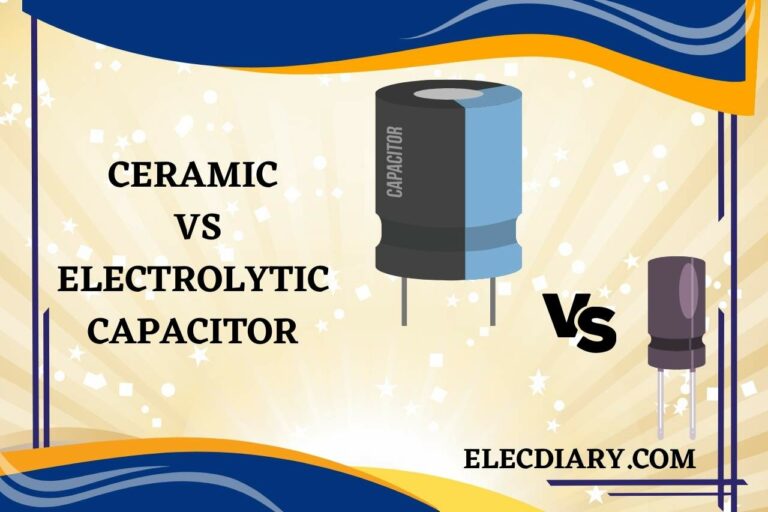Greenworks Battery Says Fully Charged but Not Working – From Charged to Silent!
You might be asking what’s going on if you have a Greenworks cell and it reads, “Greenworks battery says fully charged but not working.” This may be upsetting if you depend on the equipment for work or home improvement chores. Your battery may not be functioning while showing fully charged for a number of reasons.
In this post, we’ll go through these reasons in more detail while offering some solutions for getting your Greenworks cell working properly once more.
Lithium Battery Charging: How Do They Work?
In order to keep track of the health of lithium batteries, a BMS is required. This essential piece of gear aids in ensuring that the power sources are only being recharged when doing so is safe.
Rechargeable batteries made of lithium must not be charged in below-freezing conditions, regardless of the method you use to charge them.
Numerous owners elect to utilize rooftop solar panels for powering their lithium-ion batteries due to the batteries’ lightning-fast charging times.
However, you may also charge using the shore power or the alternator in your car. When compared to lead-acid cells, lithium batteries may save you numerous hours for time to charge them, subject to the size of the lithium battery banks.
Sadly, there are a number of potential causes if your battery made of lithium is not recharging. Any number of issues, including a broken battery or unrelated external issues, might be the cause of your rechargeable battery’s problems. To identify the cause of the issue, a bit of experimentation and debugging will be necessary.
How does the Charging Cycle Influence the Capacity of Lithium-ion Batteries?
Although different manufacturers may have different definitions of recharging cycles, all batteries eventually lose some of their optimum capacity. Whatever the battery you choose, every cycle/charge causes a little reduction in the battery’s ultimate storage space.
Even while we’d want to believe that this won’t actually impact the speed or the runtime, it actually does.
In reality, according to a number of studies, the battery’s capacity may decrease by up to 40% or greater after 1000 rotations. Some businesses, like Makita, employ a “smart” technology that takes this into consideration.
Their batteries’ present charging state and heat are recognized through a signaling system used by their charges and packs.
The power source then controls the ideal temperature, the voltage, as well as current for recharging the battery.
The battery’s usable life is increased as a result of this technique. Additionally, it increases the number of recharging cycles a battery can endure. That’s merely a single reason you might want to stay with batteries as well as chargers from the company that originally produced them.

Why May “Greenworks battery says fully charged but not working” Occur?
Defective or Damaged Battery
A power source might get physical harm over time as a result of corrosion, exposure to severe conditions, or other reasons, or it can deteriorate over time and eventually lose its capacity to store a charge.
Charger Problem
The power source might seem to be completely charged but won’t function when you attempt to use it if the charging process is improper. This can be the result of a charger and power supply issue.
The Issue with the Equipment or Item
The tool or gadget may be the source of the issue if the battery and chargers are both in good condition. This can be caused by a problem that stops the tool from working correctly, such as an error.
How are Battery Problems Diagnosed and Fixed?
Defective or Damaged Cell
Use it on an additional instrument or device to check if it’s functioning to figure out if the power supply is the issue.
If not, examine the power source for physical flaws or telltale indications of wear. It could be necessary to replace the power source if it has obvious damage or is beyond repair.
Inform Greenworks customer service to ask for an alternative if the power source is still covered by the manufacturer’s warranty.
You might have to buy another battery if the old one’s guarantee has run out or if it’s no longer protected.
Remember to take proper care of the outdated battery because it can qualify as dangerous waste.
Charger Problem
To determine whether the issue still exists, try recharging the battery using an alternative charger or source of electricity.
It is probably the original adapter that is the problem if the power source charges well with another charger.
For an alternative, if the charging device is still covered by the warranty, get in touch with Greenworks’ assistance.
You might have to buy an additional charger if the old one’s guarantee has run out or if it’s no longer covered.
The Issue with the Equipment or Item
To test if the instrument or item works, try using an alternate charger. If it is undertaken, the problem could lie with the initial battery. If the issue still exists, it can be the instrument or gadget itself.
When the guarantee has run out, you might need to get the tool repaired or think about getting a new one.
Where Can I Get a Greenworks Cell Charger?
Green blinks will appear on the light that indicates charging when the power source is charged. The power source will have a solid green color when it is completely charged.
A power source that cannot be charged because it is too warm or too cold will often have a solid red indicator.
Take the power source and chargers indoors to a cool, comfortable place before attempting to power them once more. You ought to constantly keep your battery as well as charger within.
In-built electronics inside the battery’s chargers, as stated by Greenworks, cease recharging the battery when it is completely charged. So, sure, you may leave the power source on the converter. However, you should be aware that the converter cannot provide a trickle recharge for the battery.
Make careful to fully insert the battery onto the charger after you hear a “click.” Keep the power source charged away from direct sunlight and at temperatures ranging from +5 to +45 degrees Celsius.
The power source will warm up while in use. The pack of batteries will become warmer as more power is needed.
This is charging if the green light is flashing. A quick blink indicates a weak battery. It gets charged if the light remains green.
A 2 Ah Greenworks cell can last around two hours when used with a power tool that draws 1 amp of electricity.
A 4Ah can run cordless instruments for a longer period of time since it has greater space for storing more electricity.
The power source may last anywhere between 45 and an hour, according to the instrument and operation.
The advantage of lithium-ion technology is that even at low charge levels, the battery provides full power. You can swiftly recharge in about 120 minutes and be back in action.

What Should you Do If you Notice a Constant Red Light?
Examine the Battery’s Condition
Before trying to charge a battery cell that is either too warm or too frigid, let it reach ambient temperatures.
Check the Battery for Defects
The battery pack must be changed if it is damaged. A broken battery pack should not be attempted to be used since it might be hazardous.
Look for Any Damage to the Charger
It is going to be necessary to buy a new charger if the old one is destroyed. An unsafe charger should not be attempted to be used.
Change your Outlet
Try connecting the charger to an alternate outlet if it isn’t working properly. Check to see whether the outlet has not been turned off.
Speak with Greenworks’ Customer Service
Visit Greenworks customer service for additional help if the problem is not fixed by the aforementioned measures. If more troubleshooting is required, they might be able to set up another battery or adapter for you.
Watch this one,
Video Credits – I like to Tube it, Tube it








